Caffeine in tea: Will I sleep tonight?
“I like tea, I like coffee, but I want to sleep at night. What to do?”
The dilemma of many tea drinkers.
Tea vendors do often provide contradictory information about theine content in tea and the web does not really help either. Let’s find out the truth about a topic that, indeed, is unclear and complex.
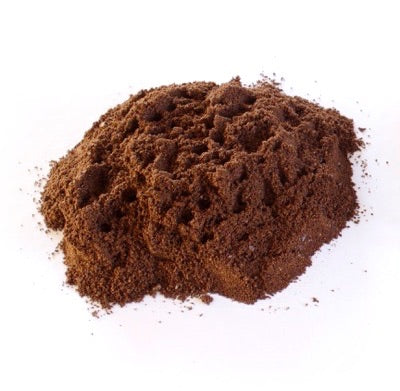
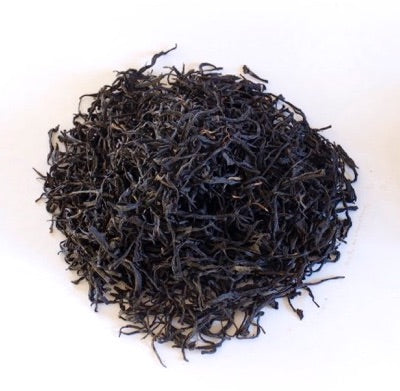
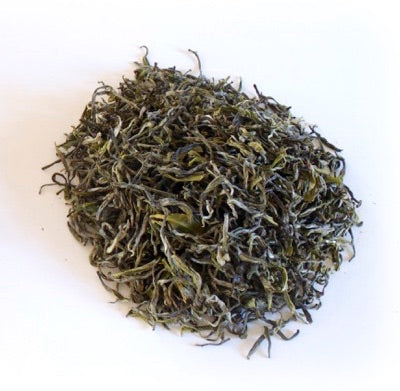
Coffee, black tea, green tea: Will I sleep tonight?
Caffeine: popular misconceptions
First of all let’s get rid of two misleading popular beliefs. Theine is not lighter than caffeine. Already in the 19th century, scientists discovered that theine and caffeine are exactly the same molecule. So it doesn’t matter if you drink tea or coffee, your body will always absorb caffeine. However quantity and the absorption rate can differ substantially.
Theine is identical to caffeine.
Black tea has no more caffeine than green tea… and green tea has no more caffeine than black tea. A contradiction? Not really. The kind of tea (white, black, green…) is determined by the processing, not by the nature of the leaves. For example in Qimen County (Anhui, China), the tea farmers produce Qimen Hong Cha—Keemun, a famous black tea—and Huangshan Maofeng—a green tea—using the same tea plants. So a green tea can be rich or poor in caffeine; and the same is valid for black tea.
The kind of tea (green, black, white…) is no indication for caffeine content.
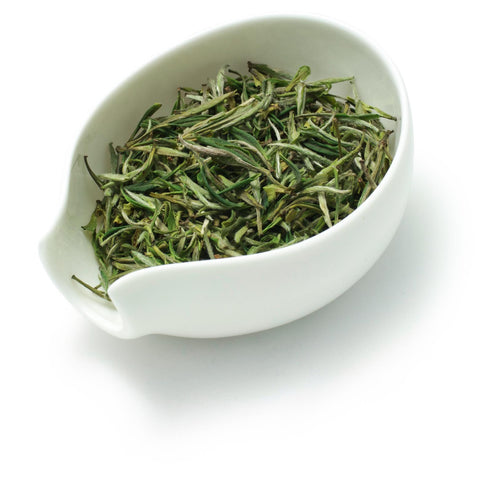
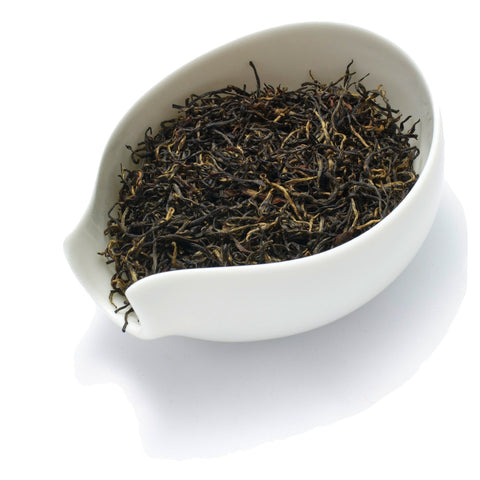
(so they have the same caffeine content)
From the leaf to the cup
The quantity of caffeine in the tea leaves depends on many parameters. Certainly on the variety of tea plant, but also on the environment (soil, climate), the season (young or ripe leaves) and the pluck (buds versus larger leaves). And this just to mention a few.
The same variety of tea can have different levels of caffeine.
In a laboratory experiment (1) 39 mg of caffeine were measured in Bai Mu Dan, but only 15 mg in Bai Hao Yin Zhen. Both white teas are produced in the same region (Fuding, Fujian) from similar plants; Yin Zhen is a bud-only tea while also the second and third leaves of the branch is plucked for Bai Mu Dan. But don't draw general conclusions: This doesn’t mean that bud-only teas have less caffeine!
To make everything even more complex, leaves with a lot of caffeine do not necessary result in tea with high caffeine concentration. Caffeine dissolves in water at different rates, and the processing of the leaves play a major role in it.
While the caffeine molecules are quite free in coffee, in the tea leaves they are bonded to other substances. Our body, to assimilate them, first has to destroy the bonds; so caffeine in coffee is absorbed faster. That’s why coffee “gives a kick” and acts more quickly on the body than tea. There are also differences between different teas. Leaves for green and white teas are processed gently; the molecules maintain the bonds and the body needs time to absorb them. That’s why many of us experience the effect of green teas few hours after having drunk it and it lasts long; maybe one of the reasons why monks drink green tea during long meditations. The leaves of black and oolong teas are rubbed against each other to favor oxidation (yao qing = rocking the green). This heavy processing tends to break the bonds between caffeine and other molecules. So the caffeine in black tea is usually absorbed faster by our body, but the effect might last shorter than in green tea.
For the same reason the caffeine in whole-leaf tea dissolves slower in water. Ground tea (e.g. matcha, tea bags) have more caffeine in the cup than whole-leaf, hand-picked tea (2). So, besides the better taste, this is another good reason to go for whole-leaf tea.
Caffeine concentration in the leaves and the influence of processing on in-the-body absorption are not the only parameters affecting the concentration of caffeine in your cup. The infusion method plays an important role. It is certainly true that hot water dissolves caffeine faster than cold water; so the higher the water temperature, the stronger the tea. And of course the longer the steeping, the higher the caffeine content.
If you discard the first steep—a common practice in gongfu cha—part of the caffeine will be discarded as well. But will the second infusion being lighter than the first? Not necessarily. The second cup may have the same amount of caffeine as the first (1).
Nonetheless, the rate of dissolution slows down after some minutes. So if you want to sleep tonight, skipping the first two or three steeps might be a good idea.
So what will disturb your sleep less?
The caffeine in green tea, absorbed more slowly, or the caffeine in black tea, of more immediate effect?
And how to determine the caffeine content of a specific green or black tea, anyway, since caffeine level does not depend on tea variety?
Which is the best infusion method to limit caffeine in our body?
As you might now deduce by yourself, to reply to these questions, I would have to start speculating.
The best, and in my opinion only, way to determine if a tea will keep you awake or make you nervous is to try it!
If you are sensitive to caffeine, ask some samples in your favorite tea shop and experiment at home before buying large quantities.
If you time is limited, ask the vendor about their personal experience, making sure they are the kind of person who "feels the caffeine"—not everyone does—and are reporting their personal experience, not something read in a magazine or heard from others.
(1) Camellia Sinensis: Tea, history, terroirs, varieties. Author: Camellia Sinensis Tea House. Edition: Firefly Books (2011). ISBN: 978-1-55407-937-7.





